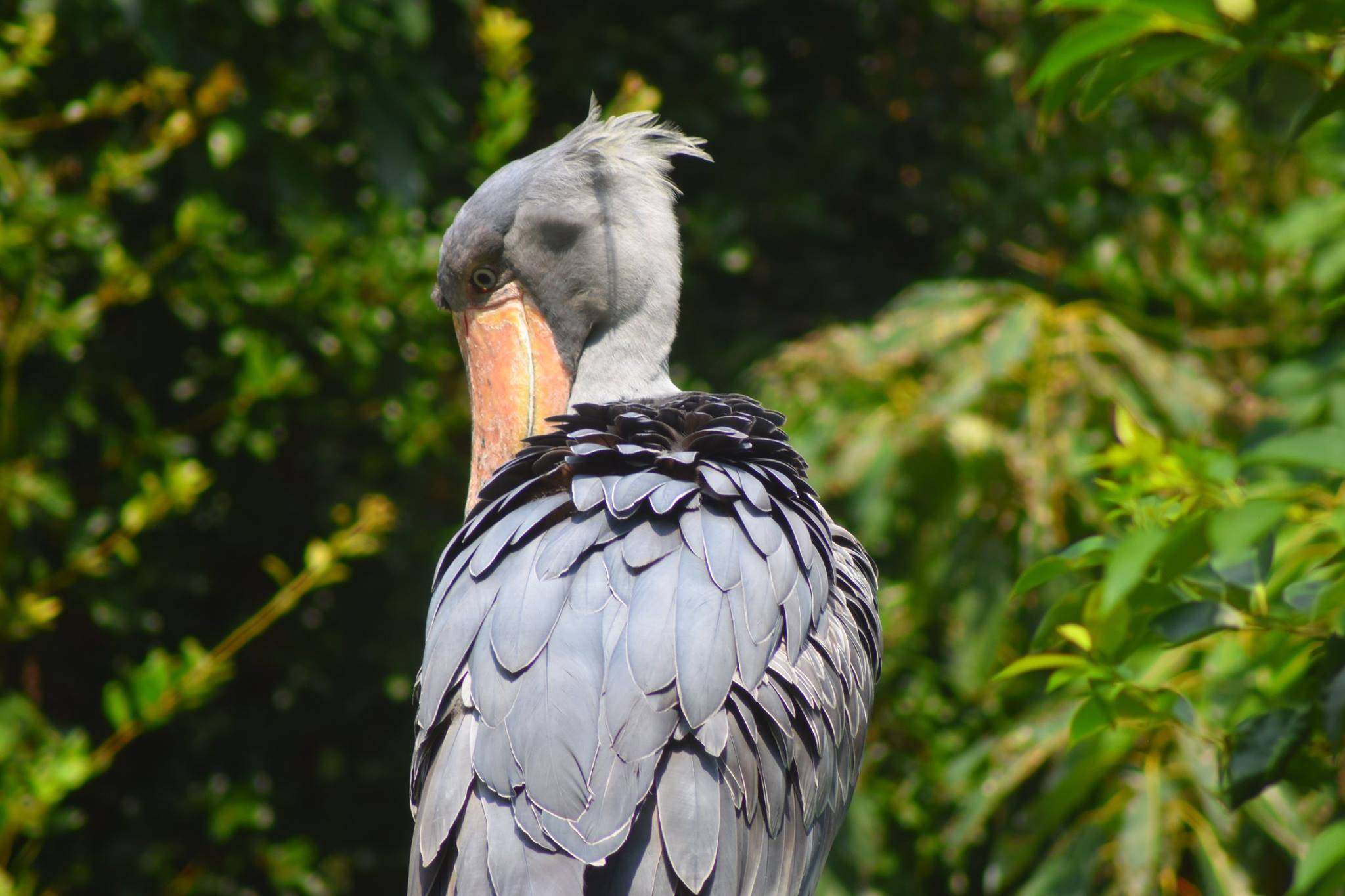
The shoebill (Balaeniceps rex) also known as whalehead, whale-headed stork, or shoe-billed stork, is a very large stork-like bird. It derives its name from its enormous shoe-shaped bill. It has a somewhat stork-like overall form and has previously been classified with the storks in the order Ciconiiformes based on this morphology. However, genetic evidence places it with the Pelecaniformes. The adult is mainly grey while the juveniles are browner. Shoebill lives in tropical east Africa in large swamps from South Sudan to Zambia.
hey eat big fish like lungfish, eels, and catfish, and also crazy stuff like Nile monitor lizards, snakes, and baby crocodiles.
The shoebill (Balaeniceps rex) also known as whalehead, whale-headed stork, or shoe-billed stork, is a very large stork-like bird. It derives its name from its enormous shoe-shaped bill. It has a somewhat stork-like overall form and has previously been classified with the storks in the order Ciconiiformes based on this morphology. However, genetic evidence places it with pelicans and herons in the Pelecaniformes. The adult is mainly grey while the juveniles are browner. It lives in tropical east Africa in large swamps from South Sudan to Zambia.
The shoebill was known to ancient Egyptians but was not classified until the 19th century, after skins and eventually live specimens were brought to Europe. John Gould described it in 1850, giving it the name Balaeniceps rex. The genus name comes from the Latin words balaena “whale”, and caput “head”, abbreviated to -ceps in compound words.
Depending on your perspective, a shoebill either has the same goofy charm as the long-lost dodo or it looks like it might go on the attack any moment.
What makes the aptly named shoebill so unique is its foot-long bill that resembles a Dutch clog. Tan with brown splotches, it’s five inches wide and has sharp edges and a sharp hook on the end.
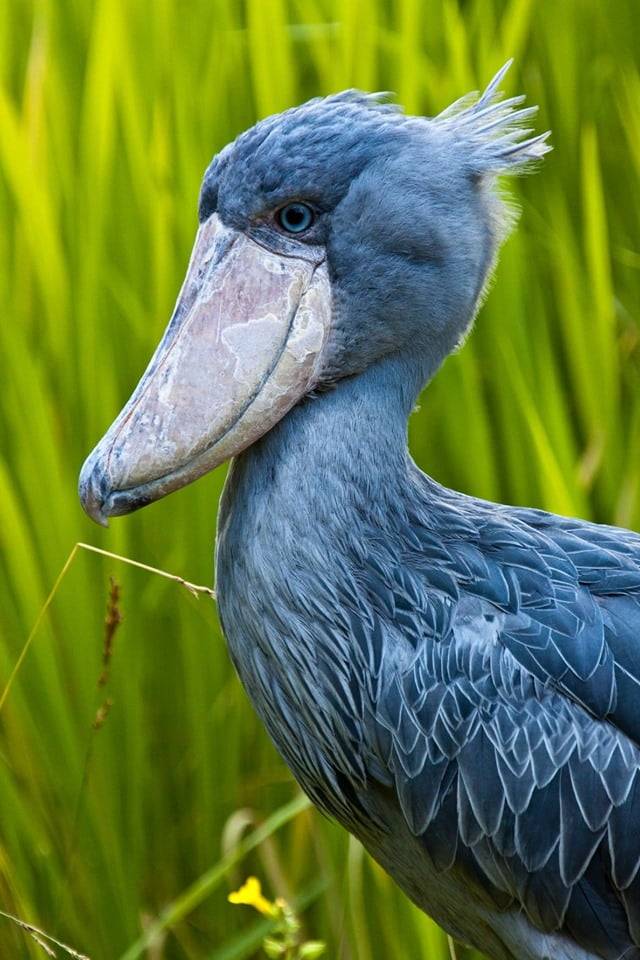
Its specialized bill allows the shoebill to grab large prey, including lungfish, tilapia, eels, and snakes. It even snacks on baby crocodiles and Nile monitor lizards.
At first glance, shoebills don’t seem like they could be ambush predators. Reaching up to five feet tall with an eight-foot wingspan, shoebills have yellow eyes, gray feathers, white bellies, and a small feathered crest on the back of their heads.
They also have long, thin legs with large feet that are ideal for walking on the vegetation in the freshwater marshes and swamps they inhabit in East Africa, from Ethiopia and South Sudan to Zambia.
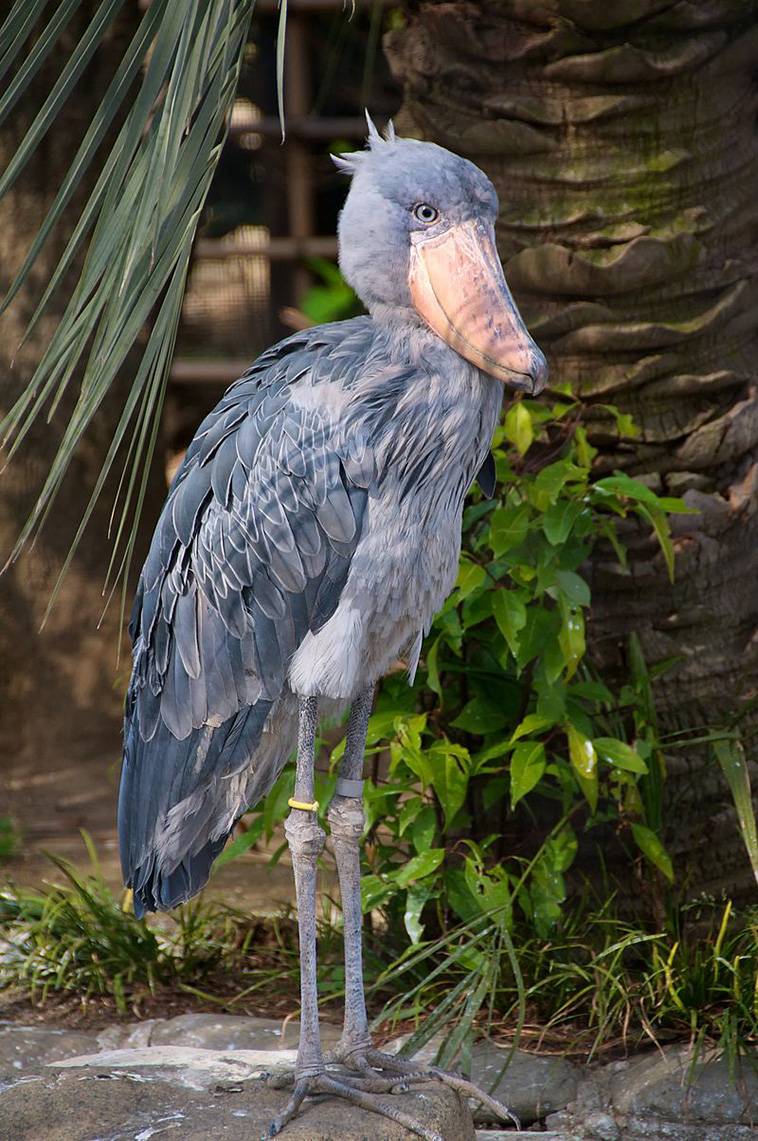
Shoebill were previously thought of as storks, but genetic research has re-classified them as members of the order Pelecaniformes and family Balaenicipitidae, which are large waterbirds, genetically closer to pelicans and herons.
The shoebill is piscivorous, primarily eating fish – in particular lungfish, as well as bichirs, tilapia and catfish. However, it does occasionally hunt and eat other prey, such as frogs, lizards, watersnakes, snails and rodents.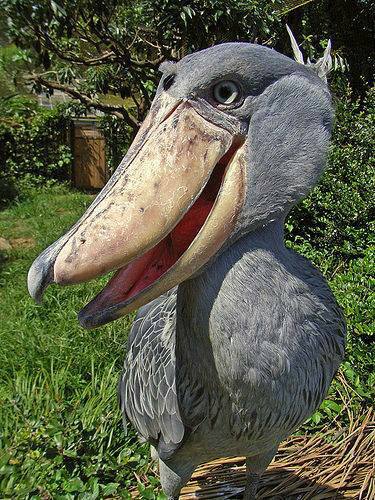
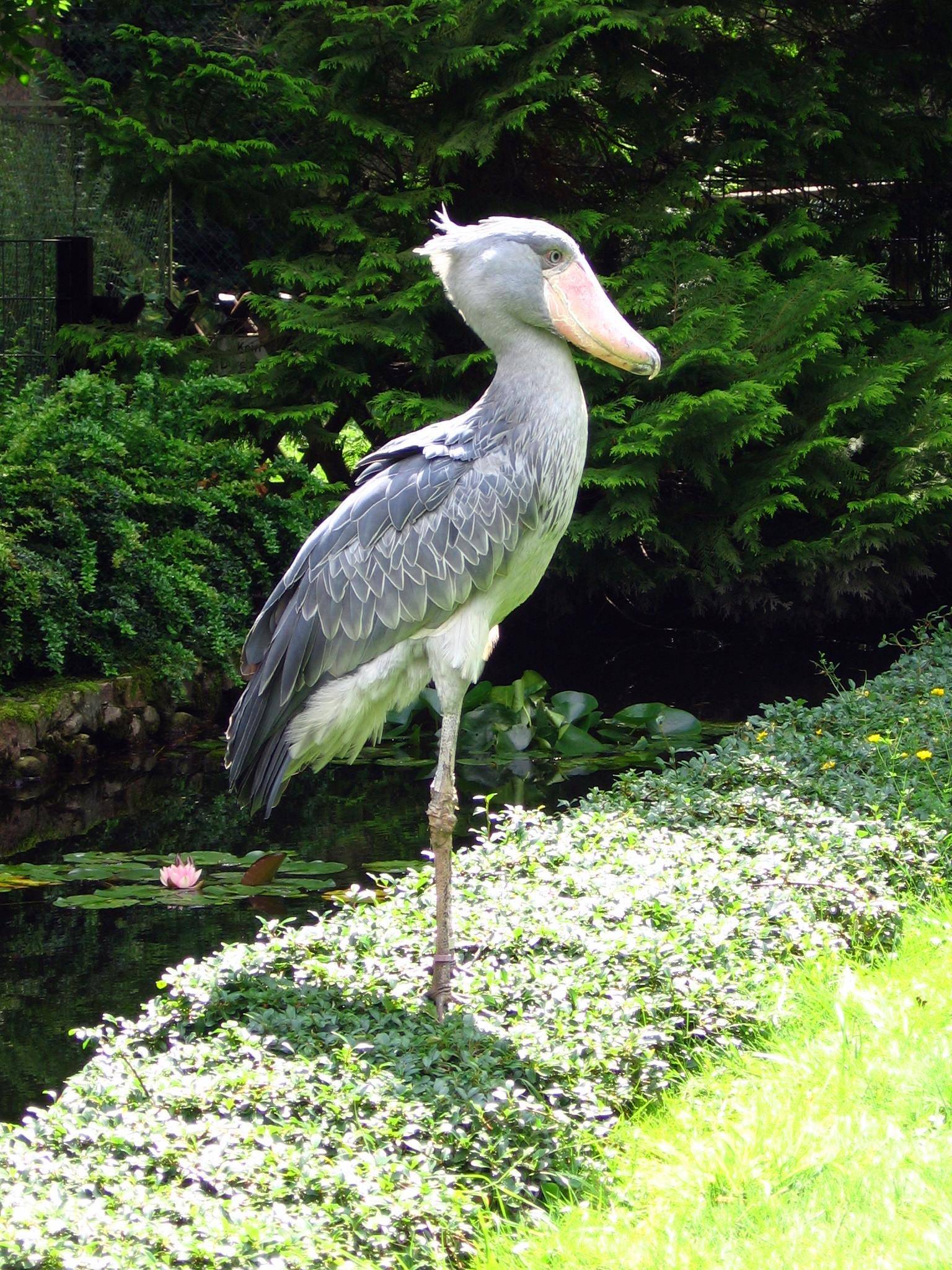
The shoebill is an extremely tall bird, with long spindly legs, that allows it to stand in the shallows of swamps and on aquatic vegetation, while hunting for food. The shoebill averages between 3.5 – 4.5 feet (1 – 1.4 meters) in height, and weighs between 9 – 15.5 pounds (4 – 7 kg). It has broad wings, with an average wingspan between 7.5 – 8.5 feet (2.2 – 2.6m).
The shoebill population is particularly difficult to evaluate with accuracy, due to where they habitat and their elusive nature, but it has declined – with estimates between 5,000 – 8,000 in total.
BirdLife International has classified it as vulnerable, due to habitat destruction, disturbance and hunting. Shoebill have specific habitat requirements for breeding, nesting and hunting, and their swamps and marshes are gradually being transformed into agricultural land, or pastures for cattle grazing.
